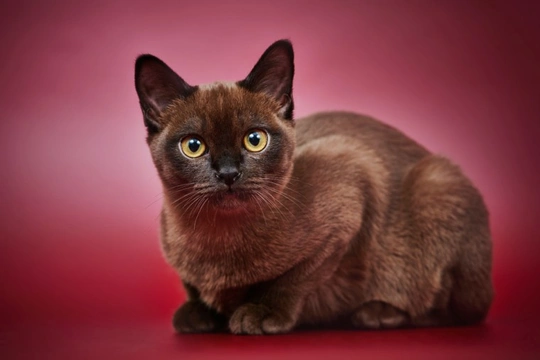
10 things you need to know about the Burmese cat before you buy one
The Burmese cat is a popular and very well known cat breed that many cat lovers have a particular soft spot for, and for many very good reasons.
This is a breed that can be a good fit for quite a wide range of different types of homes and owners, but Burmese cats are of course unique from other breeds with their own pros and cons that all prospective owners need to consider carefully before they commit to a purchase.
It takes time to learn all that you need to about any cat breed you might be considering buying, and it is not always easy to know where to get started when it comes to doing your research.
With this in mind, this article will tell you ten things you need to know about the Burmese cat, before you go ahead and buy a kitten and take it home. Read on to learn more.
1. The Burmese cat originated on the Thailand/Burma border, but was developed in Britain and the USA
The Burmese cat’s early origins place them in the region of the border between Thailand (formerly Siam) and Burma, but the breed as we know it today was ultimately developed or created in both the USA and the UK.
Cats of the breed used to historically have a uniform dark brown coat colour, but today, a range of different shades are normal and acceptable.
2. Burmese cats are related to Siamese cats
As you might expect given the Burmese cat’s close geographical origins being shared with the Siamese cat, the two breeds are closely related. The Burmese cat was in fact developed from Siamese ancestry, and the first attempts to produce Burmese breed lines in the UK actually resulted in chocolate Siamese cats instead!
3. They are particularly known for being very personable
One of the most notable points about Burmese cats is that the breed as a whole is widely considered to be a very personable one, which forms strong bonds with the people they live with and spend a lot of time with, and that likes to have plenty of company.
They tend to seek out people for affection and don’t like to be left alone at home for too long, and they are very affectionate cats that are regarded as being open, warm, social and loving as pets.
4. Burmese cats tend to be quite playful and inquisitive
As well as being highly personable, Burmese cats as a whole are a relatively playful breed, and they tend to retain a very playful streak and natural curiosity and desire to play and explore well beyond their kitten years, and often well into old age.
They may also be quite keen hunters as a result of this, and tend to enjoy playing with their owners such as by chasing string or ribbons!
5. The lifespan of Burmese cats can be very variable
The average lifespan of the Burmese cat can be highly variable, with average ranges of 10-17 being common, which really isn’t very informative for the prospective Burmese cat owner trying to establish how long their cats might live for!
Across the breed as a whole, hereditary health issues that can arise include diabetes, hypokalaemia, and flat chested kitten syndrome.
6. Some British Burmese bloodlines have elevated risks of a unique and serious dental health problem
As well as the above-mentioned hereditary health issues within the breed as a whole, Burmese cats of certain UK bloodlines also have elevated risk factors for an uncomfortable and unusual dental problem called feline orofacial pain syndrome. This results in affected cats suffering from extreme pain when their second set of teeth develop, which requires the removal of said teeth and is apt to result in the cat being so uncomfortable until this has occurred that they scar their own faces by clawing at their mouths.
7. Health testing is recommended to Burmese cat breeders
Burmese cat breeders are strongly recommended to have their parent cats tested for three specific hereditary health issues by means of DNA screening, to identify the markers of Burmese Head Defect, hypokalaemia, and GM2 gangliosidosis respectively.
If you are considering buying a Burmese cat, choose one from a breeder that undertakes health testing, and who can show you evidence of their results.
8. They’re less costly to buy than some other cat breeds
Burmese cats are moderately less costly to buy on average than most other pedigree cat breeds, with the average asking price for pedigree cats of the breed as of August 2019 being £580 for pedigree cats, and £498 for non-pedigrees.
9. The Burmese cat is a recognised pedigree with the GCCF
The Burmese cat breed is recognised for pedigree registration with the GCCF (Governing Council of the Cat Fancy) in the UK and most other international breed registries too, and as such, cats of the breed entered into the studbook are eligible for entry into GCCF cat shows.
10. The Burmese cat is a good choice for many different types of owners
The Burmese cat breed’s general heath challenges should not be underestimated, and all prospective Burmese buyers should explore this in detail and do everything possible to ensure that they make a good choice of breeder to buy from, to increase the chances of choosing a healthy kitten.
With that caveat in mind, The Burmese cat is a versatile and personable breed that can fit well into many different types of homes and lifestyles, and that is a good choice of pet for people from many different walks of life.



